The beauty of slow travel: Exploring South Korea’s Jeju Island on foot
CNA Lifestyle went on a seven-hour hike on the country's southernmost island, taking in the charms of the picturesque coast, a dormant volcano and friendly fellow hikers.
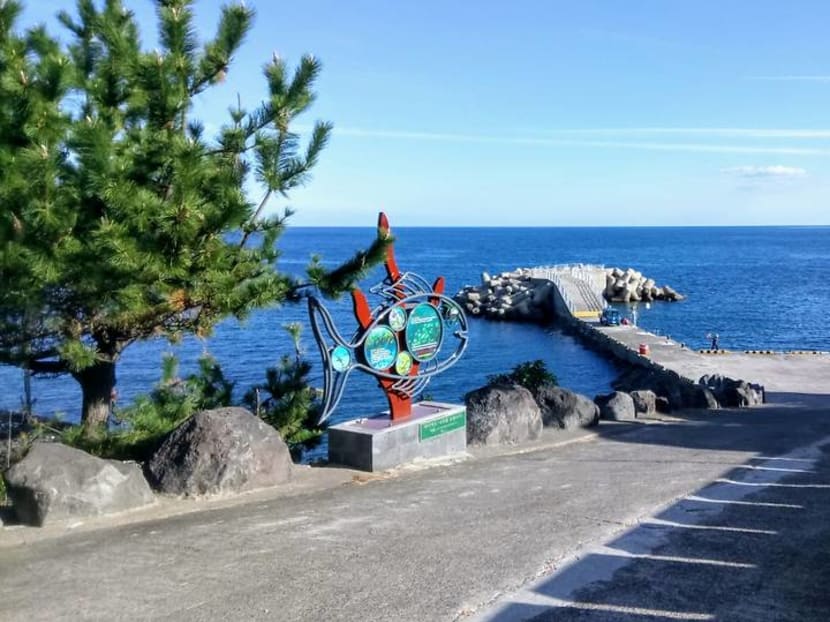
The coastal view along Route 5. (Photo: Joyce Lim)
The Jeju Olle Trail has been called the South Korean Camino de Santiago, the ancient pilgrimage route that leads to the shrine of the apostle St James in Santiago de Compostela, northern Spain.
Though the Olle Trail doesn’t lead to resting places of saints, the trek can turn out to be a somewhat religious experience – usually around the time the faint throbbing in the vicinity of your feet becomes palpable. It’s at this stage you start praying the end of the trail is around the next corner.
FINDING THE PATH
The trail is the brainchild of former news editor Suh Myung Sook. Mentally drained after 23 years as a political journalist, Suh decided to quit her job and do some soul-searching for the next chapter of her life. At age 50, she decided to travel the 800km Camino de Santiago alone.
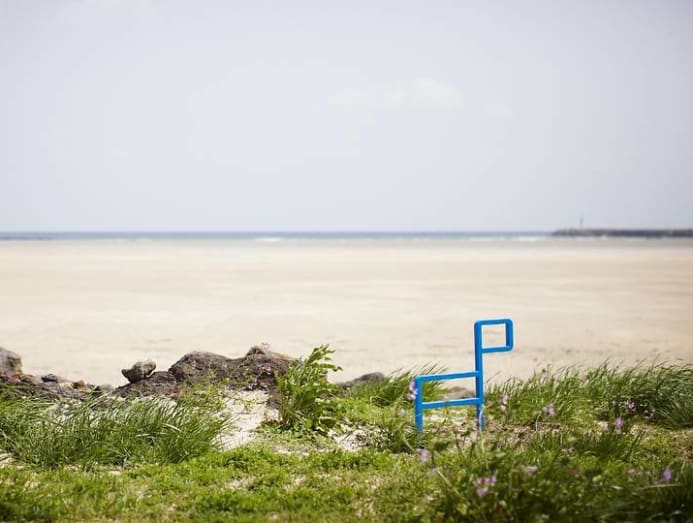
The rustic, unspoiled vistas on the Camino reminded her of Jeju, where she was born and raised. It planted the thought of creating a similar trail back home, to explore “the beauty of slowness”, as Suh put it. “Travelling by car is faster but you miss out a lot,” she said. “Places pass by too quickly to remember, unlike walking.”
WALK THIS WAY
It took Suh and a small team of volunteers, including her two brothers, a little over five years to develop the 26 routes that make up the Olle Trail network. They restored and connected broken paths and convinced sceptical landowners to allow them to carve out public pathways across their property.
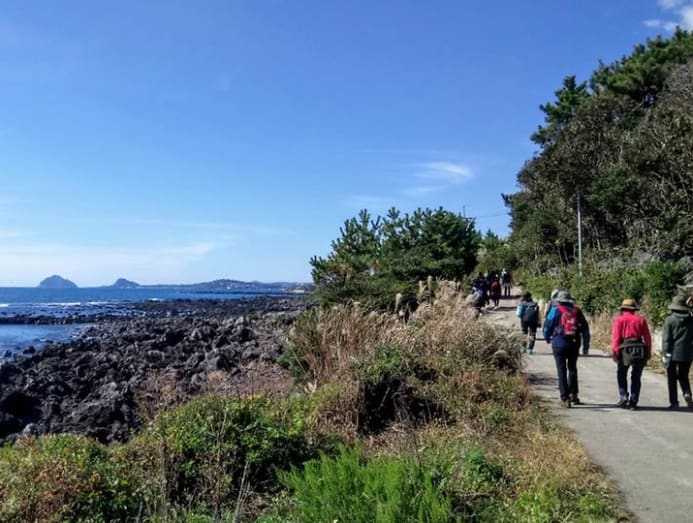
In planning the routes, she took into account what would best showcase the different aspects of the island’s varied landscape of gotjawal (forests on lava rock), oreum (inactive volcanic cones), basalt beaches and ocean. She wanted the shifts in topography to evoke different emotions and entice hikers to stay longer and discover Jeju’s other attractions.
The routes vary in length – the shortest is 7km and the longest is 23km – and difficulty, and take between three to eight hours to complete, depending on each individual’s pace.
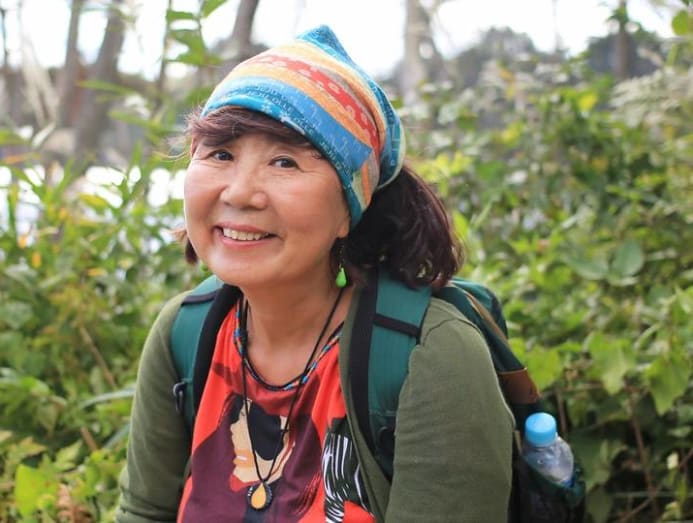
According to Suh, the oldest hiker is an 88-year-old grandmother who did her first trek at 79, and has since completed the entire 425km circuit. After a seven-hour hike on Route 5 during this year’s Olle Walking Festival, I can only conclude that Korean grandmothers are made of sterner stuff.
ROUTE SHOCK
The 13.4km Route 5 begins at Namwon port, with an easy-peasy stroll along a gently curving pavement that hugs the picturesque coast. The trail then rises up to narrow, gravelly footpaths framed by tall bushes. In one section, the space between the branches form the outline of the Korean peninsula – a photo stop for many hikers.
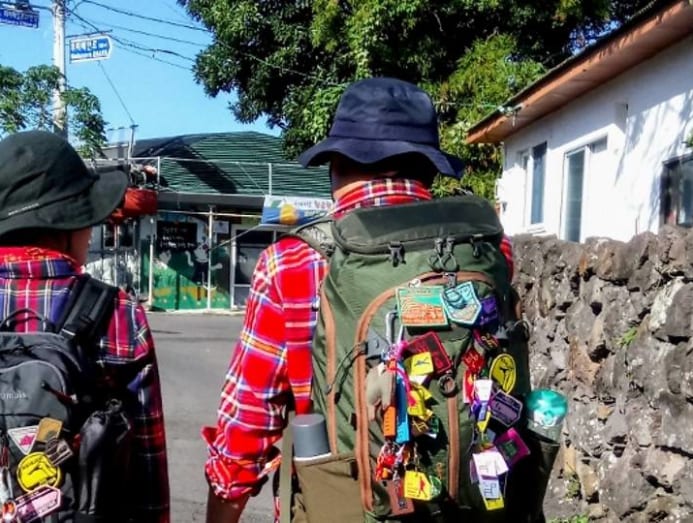
We take a breather at a pavilion where some hikers are chattering away and having a picnic. One kindly gentleman nudges a plastic box filled with chunks of sweet persimmon towards us. Another passes around rice cake snacks. Despite the language barrier, there are no strangers on the Olle Trail. We thank our fellow hikers and go on our way.
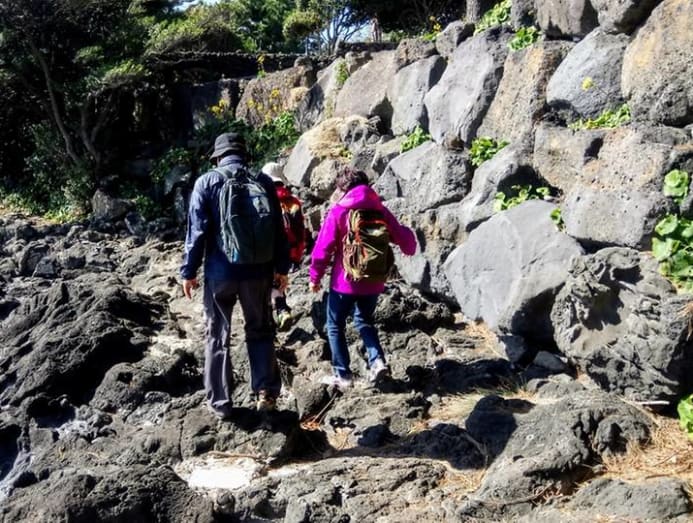
We arrive at the rock beach. While seasoned hikers climb nimbly across the irregular boulders, novices (namely, me) slow down to literally a crawl, clutching at overhanging branches to keep our balance. I feel the aftereffects the next day: My legs have turned to jelly and my thighs are on fire. I wonder how the 80something senior citizen managed to haul herself over the stone slopes without breaking something.
SHOWSTOPPING SCENERY
Thankfully, after the rock-hewn obstacle course, the roads and footpaths become more manageable, taking us past boutique resorts and charming cafes like Cafe de Seoyeun, which was featured in the 2012 nostalgia-tinged film Architecture 101.
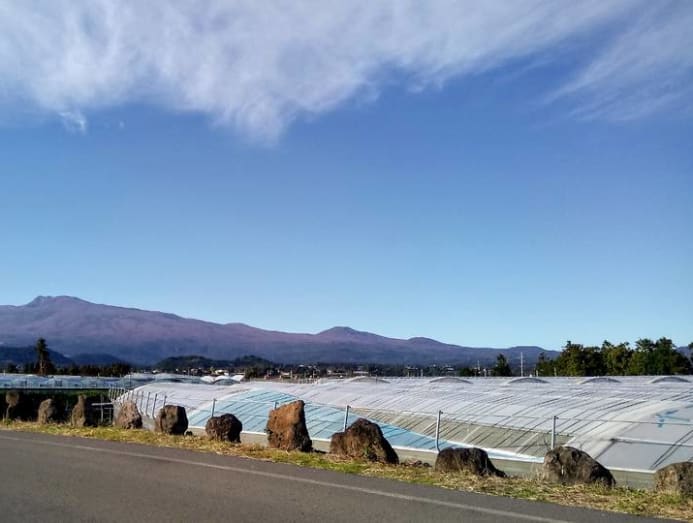
On display are posters and props from the movie about an architect who is commissioned by his first love to build this house. Unfortunately, there’s only time for a brief look in as we have to reach the end point before dark. I briefly consider Uber since we are just off the main road but scratch the idea since I have no idea what’s the Korean equivalent.
And so we trudge on, past fields with swathes of tall silver grass and tangerine farms ripe for the picking – November and December is the season for this citrus fruit. Locals nickname it the “university tree” as many a farmer put their children through tertiary education with their harvests.
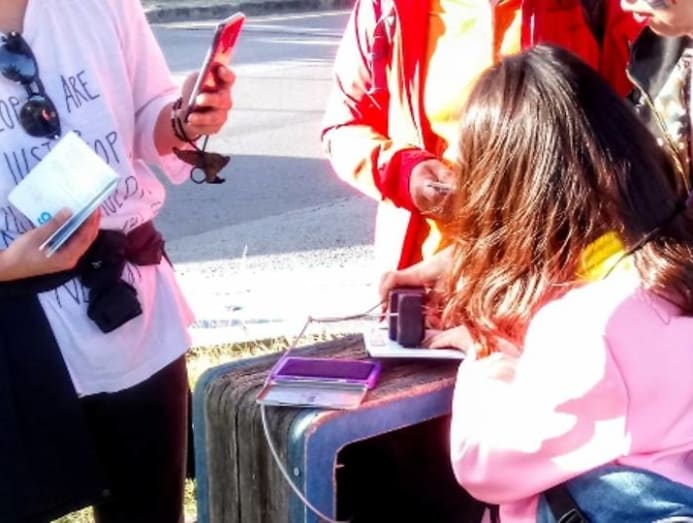
We stop to snap photos of the dormant volcano Mount Halla, which looms up behind the tangerine orchards. Finally, we reach Soesokkak Estuary, where the fresh water of the Hyodoncheon stream mingle with the sea water. Craggy cliffs of lava rock rise up on both sides of the blue-green inlet, where you can paddle a kayak or take a traditional raft ride.
We shuffle the last few metres past the Hahyo Soesokkak Beach and the breakwater of concrete tetrapods, tired but mildly exhilarated to have made it to the finish line. My legs, surprisingly, have held up.
ON THE RIGHT TRACK
While the Olle routes may test your fitness and stamina, they will not stretch your navigational skills much.
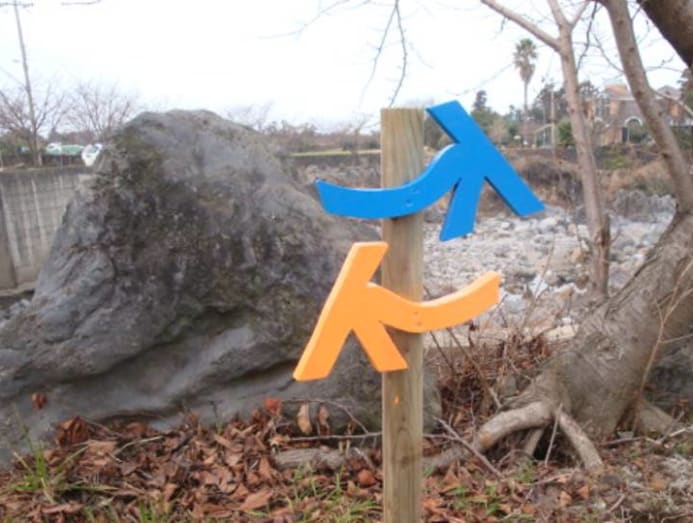
You are unlikely to lose your way because of the distinctive signposting: Bright blue and orange wooden arrows that indicate the forward or reverse direction, arrows in the same colours painted on the ground or walls, and ribbons tied on tree branches or fence posts.
Volunteers regularly check and maintain these markers, refreshing faded arrows or replacing missing ribbons. The blue horse stick figure named ganse also serves to show the way – the head points to the direction forward.
TRAIL BLAZER
Tramping around Jeju may not be everyone’s idea of a relaxing holiday on the island billed as the Hawaii of South Korea. But the Olle Trail has deeper significance beyond just being postcard-pretty. It ticks all the boxes for travellers who believe in tourism that is socially, economically and environmentally sustainable.
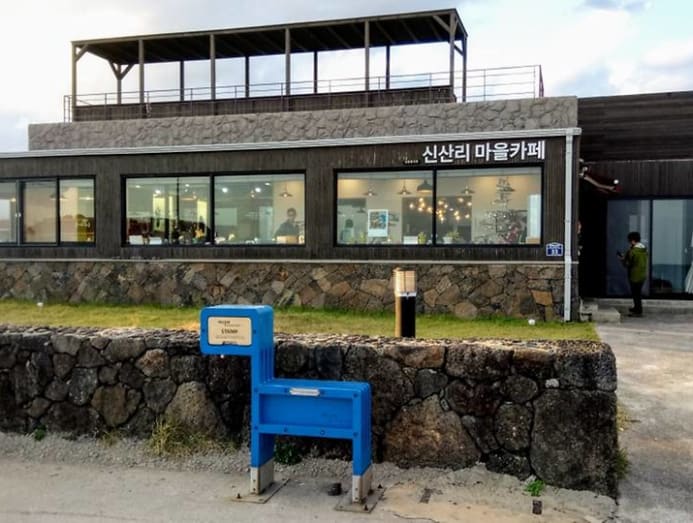
Jeju Olle Foundation, the non-profit organisation set up by Suh Myung Sook, which develops and manages the Olle Trail, works with local communities to revitalise socially-oriented businesses and forge partnerships with corporate sponsors. Visitors get to enjoy authentic experiences while supporting local enterprises along the routes.
The organisation helped the Sehwa-3ri Herb Village on Route 3 to develop the concept for an eco-friendly venture: Using essential oils from their herbs and recycled soju bottles to produce candles. You can sign up for workshops to your own lavender-scented candles with sand, shells and pebbles – a keepsake that encapsulates the quintessential smells and sights of Jeju.

On the same route, travellers can taste green tea ice cream at the Sinsan-ri Village Cafe. The coast in front of the cafe is known for its dolphin sightings. Recipes for the cafe’s green tea products were developed by chocolatier Cacao Boom, an arrangement facilitated by Jeju Olle.
Agricultural co-operative Murung Farm and Venta Korea, which makes air purification systems, are another example of this village-corporate sponsor partnership.
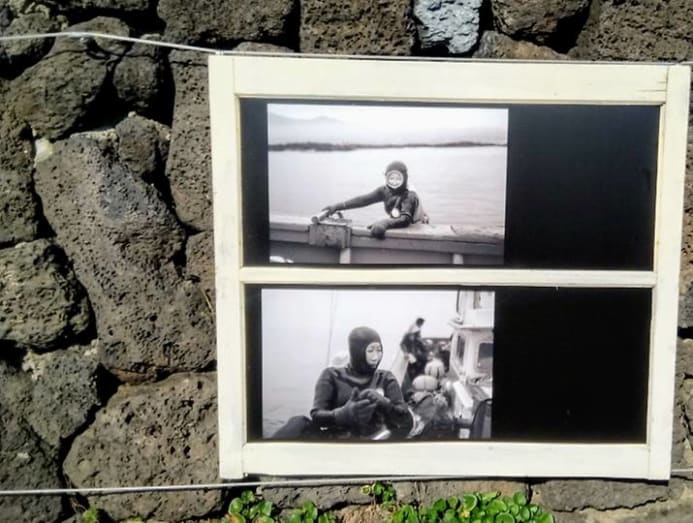
Venta’s CEO had hiked the Olle Trail and expressed interest in supporting the local community. Venta helped the Murung Farm co-operative with the branding of their products which are showcased at the industrial-chic store located at the end point of route 11 and the start point of route 12. Visitors can buy fresh vegetables and fruit, and packaged foods made with the local produce.
Hearing these stories as I explored southern Jeju on foot gave me a deeper appreciation of the Olle Trail, sore legs notwithstanding. One route down, another 25 to go!
***
TRAIL ESSENTIALS
The Jeju Olle website has detailed route information, maps and guides for hikers.
You can do the routes on your own or sign up for free daily guided walks organised by the Jeju Olle Trail Academy. The walks are conducted in Korean unless otherwise noted. Many of the volunteer guides do speak some English. Email jejuolle [at] jejuolle.org for enquiries.
CNA Lifestyle was in Jeju at the invitation of Jeju Olle Foundation.





